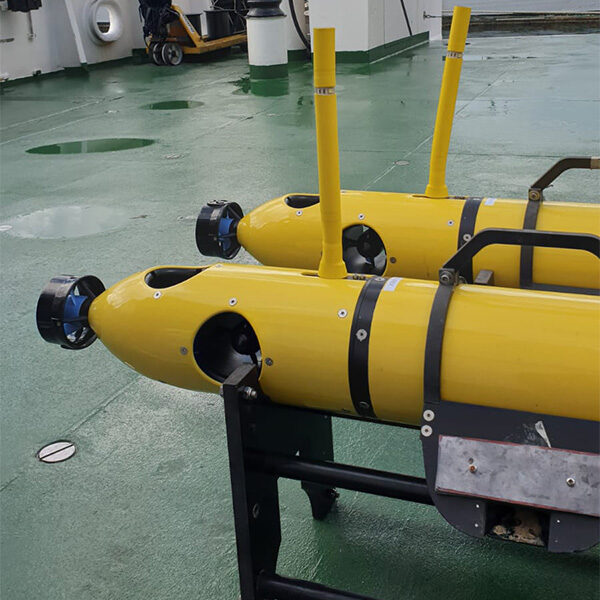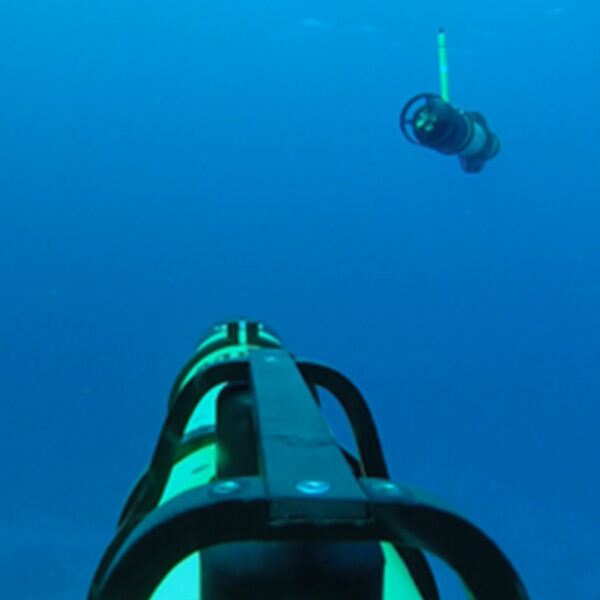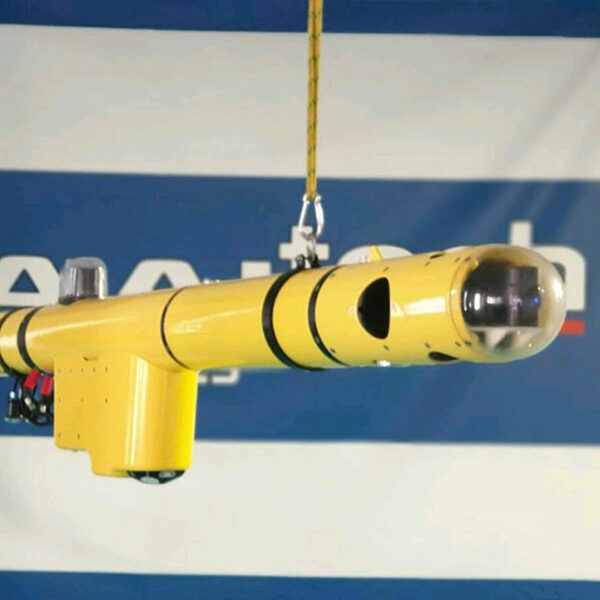X-300 – AUV
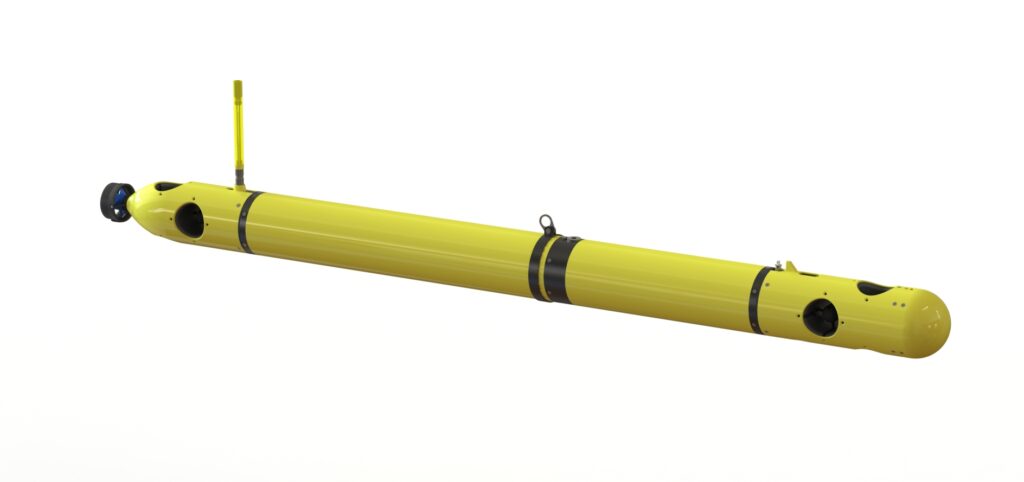
product
Specifications
-
Lenght:
2222 mm
-
Diameter:
155 mm
-
Weight in air:
29 kg (64 lb)
-
Weight in water:
Variable -0.35/+0.35 kg (-0.77/+0.77 lb)
-
Max depth:
300 msw (in AUV mode) ; 150 msw (in glider mode)
-
Max speed:
5 knots
-
Min speed:
0 knots (enhanced maneuvrability)
-
Endurance:
14 hours at max speed in AUV mode, days in glider mode
-
Batteries:
Li-Ion - 24 Volt - 1200 Wh
-
Navigation sensors:
GPS, depth-meter, 3D inclinometer
-
Additional Sensors:
humidity, temperature, battery level
-
Mission Sensors:
User selectable (payload modularity)
-
Communication:
Radio link, Acoustic link (optional)
INTRODUCTION
What is X-300 AUV
X-300 is a torpedo-shaped Autonomous Underwater Vehicle (AUV) capable of executing a wide variety of missions in the fields of O&G, Defense & Security, Oceanography and Environmental Monitoring. It is made up of a pair of carbon fiber cylinders connected to two terminating wet sections where steering and propelling thrusters are located, together with a bladder enabling variations of the vehicle buoyancy.
Generated from the Folaga experience, X-300 has the same payload modularity and open control system as Folaga, and exhibits the same maneuverability and the capability of multiple navigation modes, but is characterized by improved performance in terms of achievable speed, maximum operative depth and mission endurance.
Payload Modularity
The integration of a mission payload is a very simple task, thanks to the vehicle modular design. The hull is indeed constituted by two independent parts that can be easily detached, for enabling the insertion, in the middle of the vehicle, of a payload module, hosting the equipments of interest.
By designing the payload module in order to be neutrally buoyant and balanced, any sensor or underwater instrument, be it commercially available or custom-made, can be transported by X-300 without affecting its navigation parameters and without requiring any calibration operations
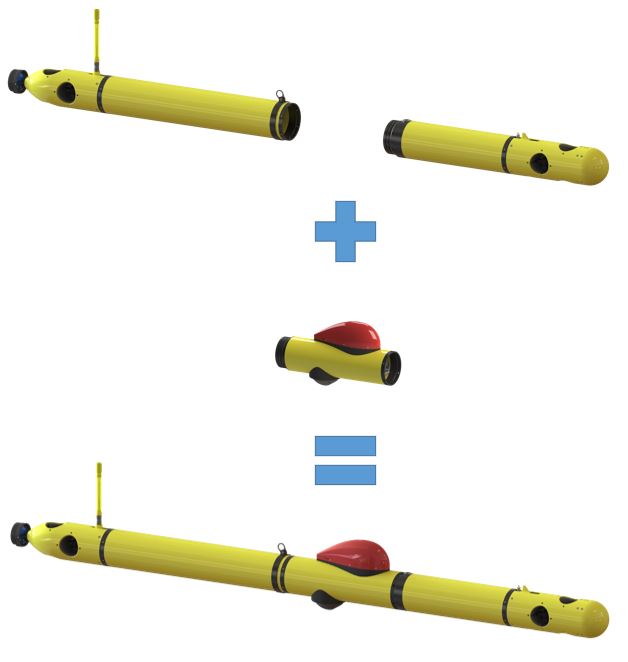
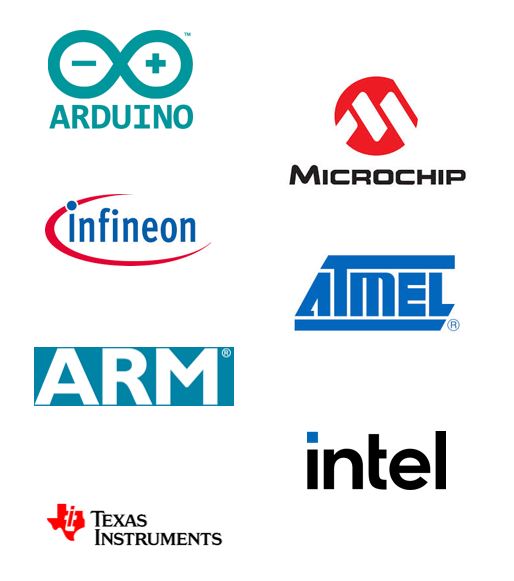
Open Control System
Your favourite control board (Arduino, Arm, x86) can be easily hosted in a payload module, with or without other equipment. A serial and a network link are available for connecting your board with the vehicle CPU.
A set of predefined libraries provides access to all the vehicle sensors and actuators and to the communication devices (the WiFi link on surface and the acoustic modem, available as an optional feature, underwater).
In this way your Uapp (Underwater App) will get the total control of the X-300 AUV and you will be in the condition of testing in the real underwater environment your developed GNC algorithms or your coordination strategies between multiple AUVs. Available templates will help you to code your first Uapp today.
Enhanced Maneuvrability
One of the main features of X-300 is its high maneuverability, obtained without any moving control surfaces. The motion in the surge direction is produced by 1 bi-directional rear thruster. Steering motions, in both vertical and horizontal planes, are instead made possible by 2 pairs of additional bi-directional thrusters placed, in crossed configurations, at the vehicle bow and stern.
Conventional torpedo-shaped AUVs can execute maneuvres only above certain speeds, as the steering action is produced by the hydrodynamic lift given by thrusters and control surfaces. On the contrary X-300, can rotate around its center even when the rear thruster is off and can translate, either horizontally or vertically. In addition the vehicle can also change its buoyancy, thanks to the presence of a ballast chamber in which water can be injected or ejected, and can control its hydrostatical equilibrium attitude through the internal displacement of the battery pack.
The combined use of buoyancy and attitude controls further enriches the vehicle motion possibilities, actually making X-300 a hybrid vehicle with the motion capabilities of standard self-propelled AUVs, remotely operated vehicles (ROVs), and even low-power consuming oceanographic gliders.
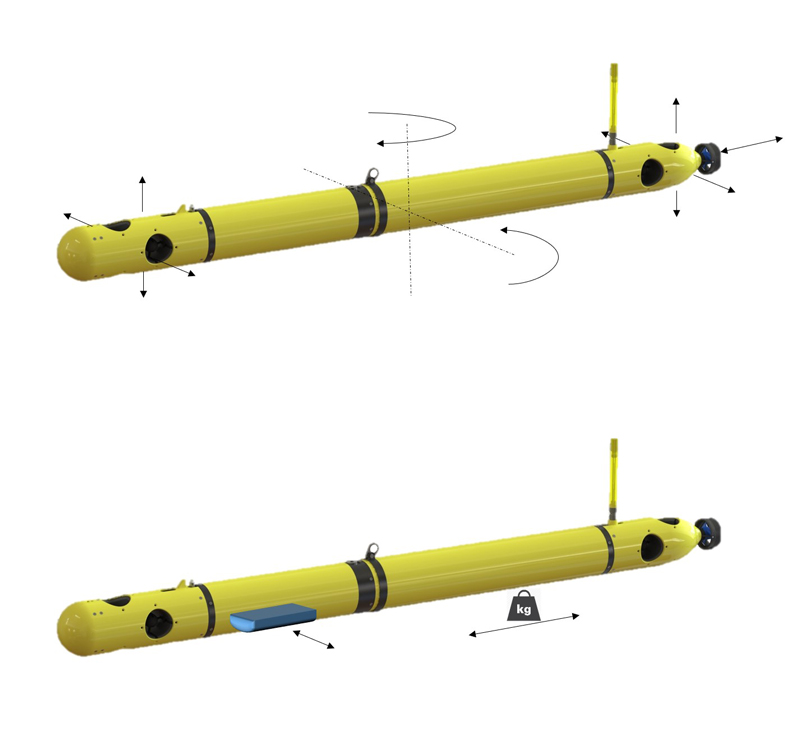
Multiple Navigation Modes
The presence of a redundant actuation system, enable X-300 to dive, navigate and execute various manoeuvres in multiple modes, according with the mission peculiarities and needs.
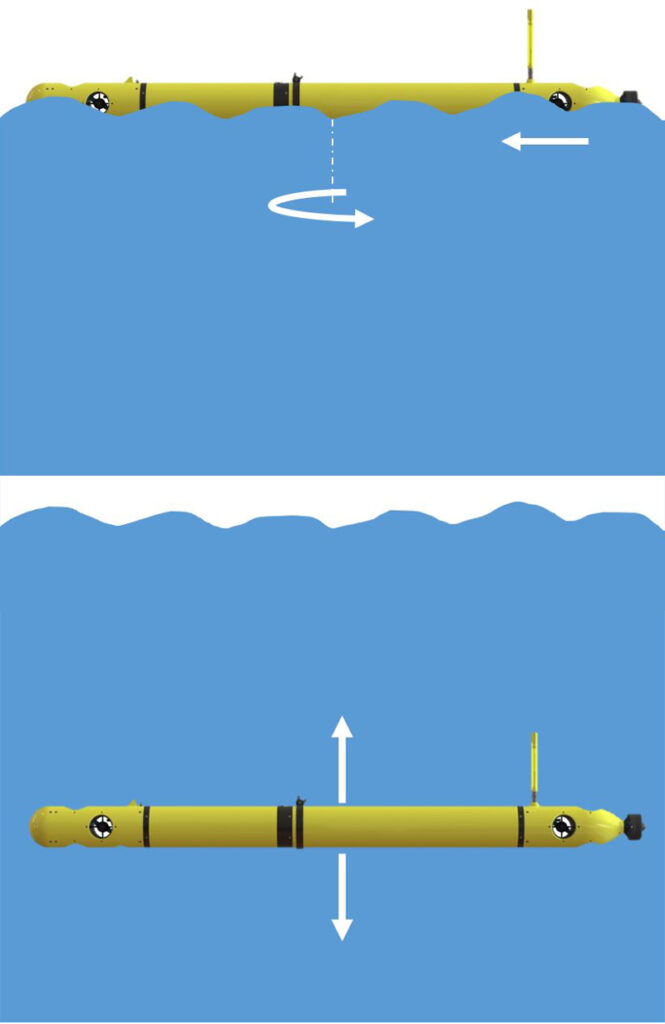
Profiler
Within environmental missions requiring the acquisition of samples taken from evenly spaced points of a 3D water volume, the vehicle navigates on surface with the GPS link to reach a point of interest and then it simply dives vertically with 0° pitch for profiling the water column. In this case both descending and ascending motions can be executed by using, either the vertical thrusters only (with the vehicle neutrally buoyant), or the ballast and the internal moving mass only, or a combination of the two previous ways, with the vertical propulsion provided by changes of buoyancy and the thrusters used for finely trimming the pitch angle.
Glider
If the points to be sampled are distributed on a wider volume, like what happens in many oceanographic missions, the glider mode is more convenient for prolonging the endurance. In glider mode the vertical propulsion is originated by changes of buoyancy, while the horizontal motion is produced by the hydrodynamic lift coming from wings that can be easily added in the middle of the vehicle. As a result, the vehicle moves along diagonal paths and consumes electric power only for executing changes of buoyancy and attitude. The rear thruster is never used. In addition, changes are executed only when the vehicle is at its minimum or maximum mission depth. During the whole ascending and descending phases no actuators are used.
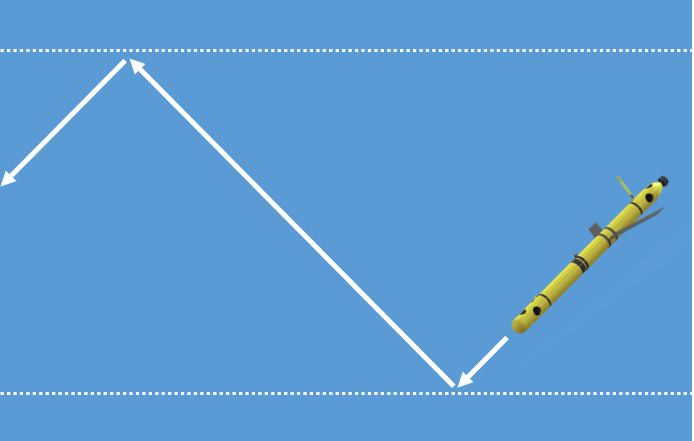
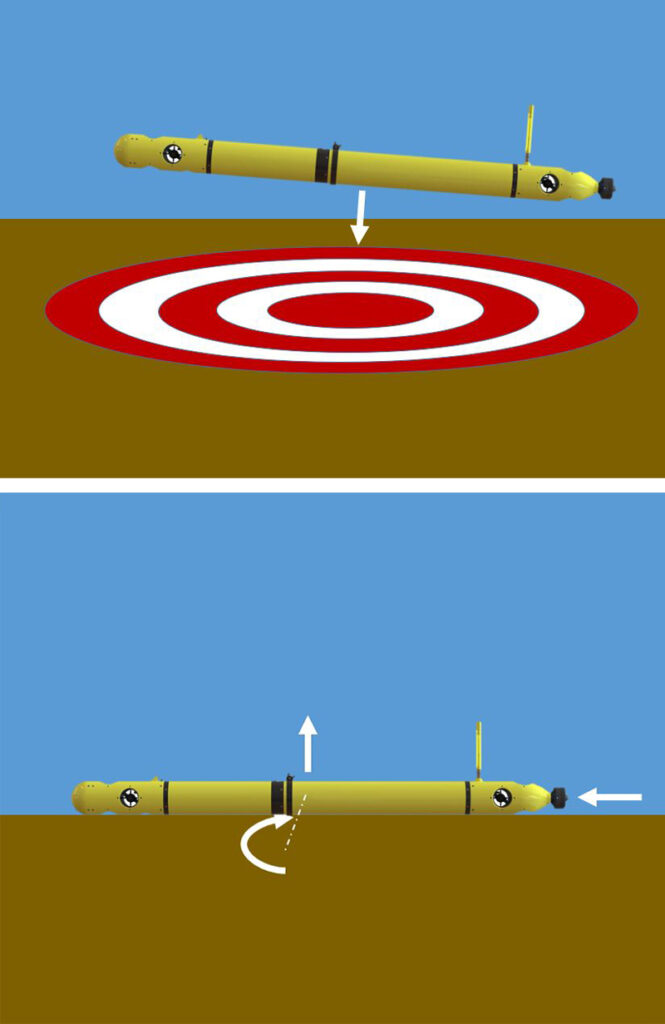
AUV
Within missions requiring underwater navigation phases (like during an acoustic survey of the seabed), the vehicle moves as a standard AUV, using the rear thruster for propulsion, a combination of attitude and buoyancy controls for reaching a neutrally buoyant and balanced configuration, and the steering thrusters for maintaining the desired depth and controlling the pitch and heading angles during the navigation.
Further, differing from any other AUV, the hovering capability and the possibility of translating enable X-300 to reach and maintain a predefined position, to land gently on a target on the seabed, and to take off, either with a vertical motion or with a combination of propulsion and vertical thruster.

